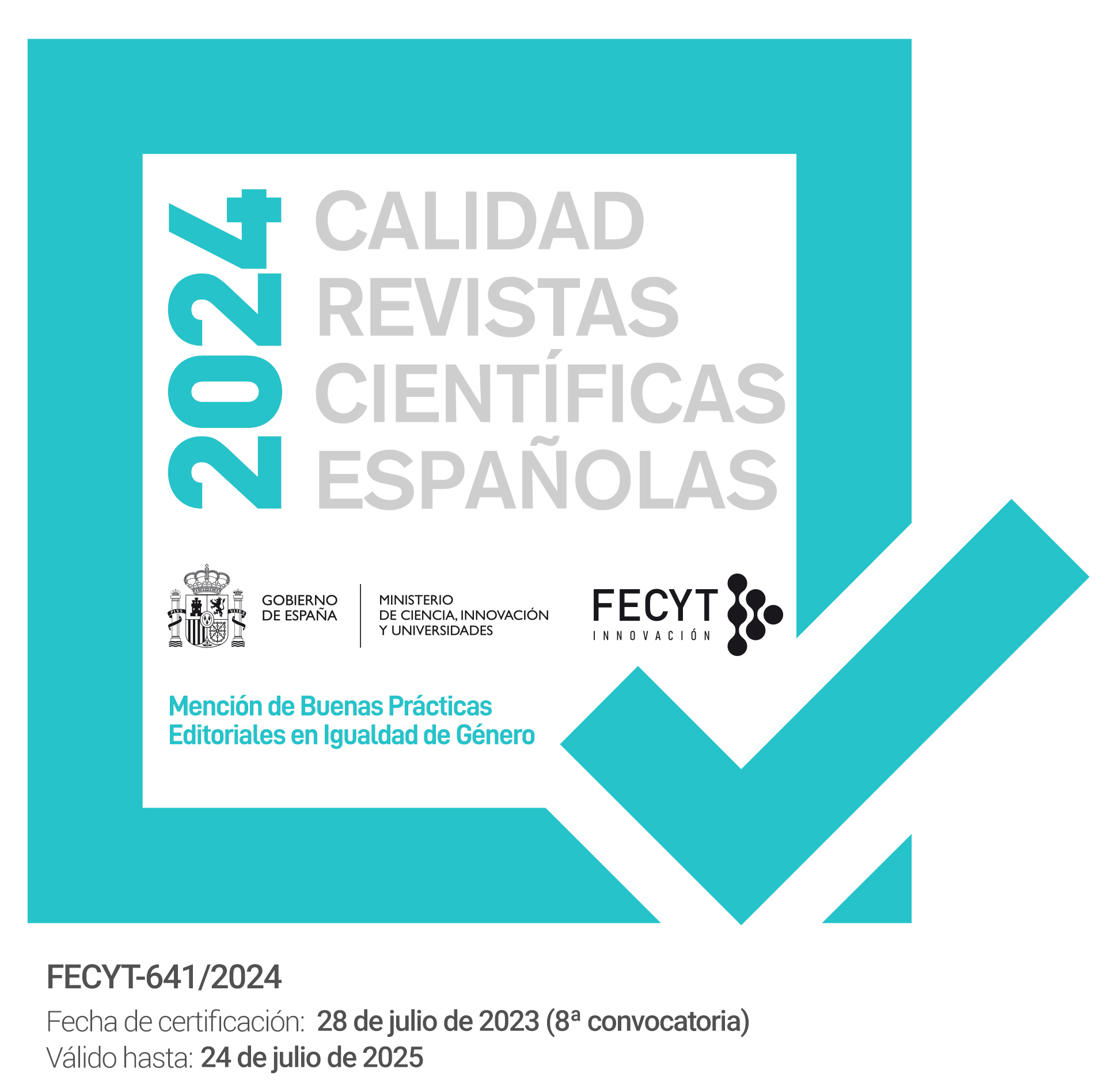The aesthetics of metapoetics in al-Mutanabbī’s panegyric “qaṣīda” to Abū al-Faḍl Aḥmad ibn ‘Abd Allāh
DOI:
https://doi.org/10.12795/PH.2017.i31.17Keywords:
Classical Arabic poetry, Al-Mutanabbī, metapoetics, qaṣīdah, panegyricAbstract
This article presents first, a translation into Spanish of a poem by the 10th century Arabic poet Abū Ṭayyib Aḥmad ibn al-Ḥusayn al-Mutanabbī al-Kindī (better known as al-Mutanabbī). The core of the analysis is the identification of the metapoetic elements used by the poet in order to establish a dialogue with the poetic tradition that precedes him and to solidify his position as one of the most important Arabic poets. How does the author negotiate what the North American critic Harold Bloom called the “anxiety of influence? Al-Mutanabbī manipulates the lexicon as well as the most recurring imagery in classical Arabic poetry so as to resolve the existing tension between inscribing himself within that tradition and producing a poem original enough to stand out from it. The result is a poem that relies on the ideal reader’s knowledge of classical Arabic poetry which allows the poet to evoke an entire poetic situation instead of repeating it.Downloads
Metrics
No metrics found.
Referencias bibliográficas
Referencias Bibliográficas
Blachère, R. (1971): “Al-Mutanabbī”, Encyclopaedia of Islam. Vol. 6, 769-772.
Bloom, H. (1975): “Poetry, Revisionism, Repression”, Critical Inquiry 2:2, 233-51.
Conte, G. B. (1986): The Rhetoric of Imitation. Genre and Poetic Memory in Virgil and Other Latin Poets. Traductor Charles Segal. Ithaca: Cornell University Press.
Irwin, R. (ed.) (2002 [1999]): Night & Horses & the Desert. An Anthology of Classical Arabic Literature. New York: Anchor Books.
Lane, E. W. (1968 [1872]): An Arabic English Lexicon. 8 vols.
London: Williams and Norgate [reimpreso en Beirut: Librerie du Liban].
Larkin, M. (2006): “Al-Mutanabbi, Abu’l-Tayyib Ahmad Ibn al-Husayn al-Jucfi”, en: Meri, J. W. (ed.): Medieval Islamic Civilization. An Encyclopedia. vol 1. New York: Routledge, 542-44.
Ouyang, Wen-Chin (1997): Literary Criticism in Medieval Arabic-Islamic Culture: The Making of a Tradition. Edinburg: Edingburg University Press.
Rubiera Mata, María Jesús (1974): “La poesía cinegética árabe”, Orientalia Hispanica sive studia F. M. Pareja dedicavit. Leiden: E. J. Brill, 566-579.
Sperl, S. (1977): “Islamic Kinship and Arabic Panegyric Poetry in the Early 9th Century”, Journal of Arabic Literature 8, 20-35.
Stetkevych, J. (1993): The Zephyrs of Najd. Chicago: Chicago University Press.
Stetkevych, J. (1994): “Toward an Arabic Elegiac Lexicon: The Seven Words of the Nasīb”, en: Stetkevych, S. P. (ed.): Reorientations: Arabic and Persian Poetry. Bloomington: Indiana University Press, 58-129.
Stetkevych, S. P. (1991): Abū Tammām and the Poetics of the cAbbāsid Age. Leiden: E. J. Brill.
Stetkevych, S. P. (1994): “Pre-Islāmic Panegyric and the Poetics of Redemption”, en: Stetkevych, S.P. (ed.): Reorientations: Arabic and Persian Poetry. Bloomington: Indiana University Press, 1-57.
Stetkevych, S. P. (1996): “cAbbāsid Panegyric and the Poetics of Political Allegiance: Two Poems of al-Mutanabbī on Kāfūr”, en: Sperl, S./Shackle, C. (eds.): Qasida Poetry in Islamic Asia and Africa. Leiden: E. J. Brill, 35-63.
Stetkevych, S. P. (1996): “cAbbāsid Panegyric. The Politics and Poetics of Ceremony: al-Mutanabbī’s cĪd-Poem to Sayf al-Dawlah”, en: Smart, J. R. (ed.): Tradition and Modernity in Arabic Language and Literature. Surrey: Curzon, 119-43.
Vázquez, M. A. (2003): “Poetics Pilgrimages: From Baghdad to Andalucía, Abū Tammām’s lā anta anta wa lā al-dyāru dyaru”, Journal of Arabic Literature 34:1-2, 122-37.
Fuentes Documentales
Abū Tammām Habīb ibn Aws al-ṭā’ī (1964): Dīwān Abī Tammām bi šarḥ al-Ḫaṭīb al-Tabrīzī. 3 vols. Cairo: Dār al-Macārif.
Abū al-ṭayyib Aḥmad ibn al-ḥusayn al-Mutanabbī al-Kindī (1983): Dīwān al-Mutanabbī. Bayrūt: Dār Bayrūt.
Abū al-ṭayyib Aḥmad ibn al-ḥusayn al-Mutanabbī al-Kindī (1861): Dīwān al-Mutanabbī wa fī atnā’i al-matnihi šarḥu al-imāmi al-callamati al-Wāḥidī. Berlin: s.e.
Abū al-Ṭayyib Aḥmad ibn al-Ḥusayn al-Mutanabbī al-Kindī (2006): “Laki yā manāzilu fī al-qulūbi manāzilu”. Wāḥat al-Mutanabbī. Editores Al-Qarya al-Iliktrūniyya fī Abū Ẓabī. <http://www.almotanabbi.com/poemPage.do?poemId=207> (22 agosto 2016).
Published
How to Cite
Issue
Section
License
The printed and electronic editions of this Journal are edited by the University of Seville Editorial, and the source must be cited in any partial or total reproduction.
Unless otherwise indicated, all the contents of the electronic edition are distributed under a license of use and distribution “Attribution-NonCommercial-NoDerivatives 4.0 International” . You can view the informative version and the legal text of the license here. This fact must be expressly stated in this way when necessary.
Authors who publish in this journal accept the following conditions:
- The author/s retain copyright and grant the journal the first publication right, and accept it to be distributed with the Creative Commons By NC ND 4.0 licence, which allows third parties to use what is published whenever they mention the authorship of the work and the first publication in this journal and whenever they do not make commercial use and reuse it in the same way.
- Authors can make other independent and additional contractual agreements for the non-exclusive distribution of the article published in this journal (e.g., include it in an institutional repository or publish it in a book) provided they clearly indicate that the work was published for the first time in this journal.
Authors are allowed and recommended, once the article has been published in the journal Philologia Hispalensis (online version), to download the corresponding PDF and disseminate it online (ResearchGate, Academia.edu, etc.) as it may lead to productive scientific exchanges and to a greater and faster dissemination of published work (see The Effect of Open Access).
Accepted 2018-05-15
Published 2018-06-20
- Abstract 591
- PDF (Español (España)) 97
- EPUB (Español (España)) 35
- HTML (Español (España)) 269











